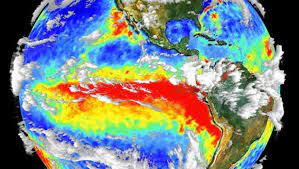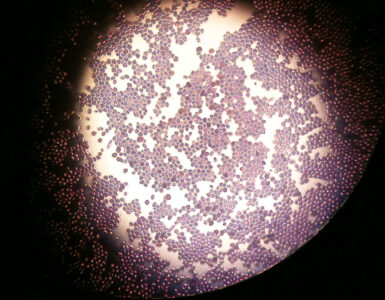| By Éva Őzse |
No, it’s not science fiction, the Voyager spacecraft has been traveling with our gold
discs containing Earths messages since 1977. We sent them out to find us, SETI is about us finding them, an intelligent life form beyond our Earth. Sure enough, NASA has
something to do with the effort.
Even in ancient times, there were theories that life could exist on any celestial body. Then,
with the development of the heliocentric worldview (Copernicus – everything revolves
around the Sun, the Moon revolves around the Earth, and the Earth revolves around its own
axis) Giordano Bruno (1548, Nola – February 17, 1600, Rome) a monk, philosopher,
astronomer gave voice to the theory that the Universe, space and time are infinite.
Consequently, an infinite number of galaxies, stars, planets, life and gods can exist on them.
The Inquisition declared him a heretic for this and other reasons and burned him at the stake.
With the development of technology, the search for extraterrestrial life has become a
science, although the story is still quite divisive to this day. We primarily research using radio
waves, because they easily penetrate gases and dusts. Of course, we also use optical devices,
such as laser light. SETI does not broadcast, it only searches.
In 1963, the Big Ear radio telescope was built on the grounds of the private Ohio Wesleyan
University, which operated until 1998. The longest SETI program in our history so far.
The Big Ear caught the WOW! signal in 1977.
The WOW! signal
On the 15th of August 1977, astronomer Dr. Jerry R. Ehman caught a signal that lasted 72
seconds and was unlike any other before. This signal was detectable at the frequency emitted
by hydrogen. It hasn’t happened again since then. There have been theories about what this
could have been, but none have been proven.
According to one of these theories, the radio telescope caught the signals of a pair of comets,
but it was later proven that no comets passed through the examined area at that time and
comets do not emit radio signals at this frequency.
Another theory was born this year. Amateur astronomer Alberto Caballero examined the
region from which the Wow! signal comes. According to him, if the signal is artificial, it
could have come from a Sun-like star from the signal range 2MASS 19281982-2640123.
And where does the name come from? While analyzing the data, Dr. Jerry R. Ehman
engraved only one word next to the outstanding, different value: WOW!
But where did modern SETI start?
Nikola Tesla (July 10, 1856 – January 7, 1943) Serbian-American physicist, inventor,
electrical engineer, mechanical engineer, philosopher, and Guglielmo Marconi (April 25,
1874 – July 20, 1937) Italian physicist and engineer, for example, were thought to they can
pick up the signals of the Martians with a radio.
Modern SETI dates back to 1959. In that year, two physicists, Phillip Morrison (November 7,
1915 – April 22, 2005) and Giuseppe Cocconi (1914–2008), set out on a simple theory. They
used the world’s most powerful radar transmitter as a basis, and that it is directed to a large
receiving antenna. In their minds, the two physicists separated the transmitter and the
receiver. They wanted to know where will be the distance would be when they could still
reliably receive each other’s signals. To their surprise, it turned out that even if the transmitter
and receiver are separated by a light-year distance, the radio connection can still be
established.
In other words, even with the radio technology of the 1950s, it was theoretically possible to
use radio to signal across distances comparable to interstellar distances. This remarkable
calculation led the two scientists to write a paper suggesting that maybe intelligent aliens are
using radio to communicate, and that we should be looking for such signals. The first person
to actually investigate was Frank Drake (May 28, 1930 – ), astronomer, astrophysicist, father
of SETI. In 1960, he used an 85-foot-diameter antenna at Green Bank, West Virginia, to
search for signals that might come from two very close star systems. During the two weeks of
his experiment, Drake did not hear any alien transmissions, yet his project was the beginning
of modern SETI.
NASA and the SETI Institute
From the 1960s, NASA also financed smaller SETI projects and they also worked on their
own program, which was later cancelled. John Billingham, the head of life sciences at NASA
Ames Research Center at the time, worked out how research could be done more efficiently.
This gave rise to the SETI Institute, a non-profit organization, in 1984 with two members:
Tom Pierson and Jill Tarter astronomer. Today, roughly 100 scientists are members of the
organization.
Sub-centers were created, the research department of which runs under the name of the Carl
Sagan Center.
Carl Edward Sagan (November 9, 1934 – December 20, 1996) was an American astronomer,
planetologist, biologist, astrobiologist, and peace activist. His work deserves a separate
article. =) He also worked as a consultant for NASA. He worked to do on the Apollo
program, some space probes, it was his idea to send a message into outer space with the
probes, and I could list many, many, really many mind-blowing things. He was a true
pioneer. His passion was the promotion of science and the SETI program.
The movie Contact was also made from his novel.
The Center of Education has got a STEM program, what is funded by NASA and the
National Science Foundation. Their goal is to make the sciences as widely known as
possible, from children to adults to educators, primarily in the field of outer space and
astrobiology.
STEM – Science + Technology + Engineering + Mathematics
A separate department was created for “PR”. The mission of the Center for Outreach, beyond
the obvious, is to introduce and popularize the natural sciences as widely as possible in
various forums (podcast, radio program, magazines, etc.), with various colorful programs
and lecture series.
There is also a Hungarian aspect, however, in the person of Iván Almár (April 21, 1932 – ),
astronomer, space researcher, doctor of physical sciences, hereditary and honorary president
of the Hungarian Astronautical Society (MANT), researcher of the Hungarian Academy
of Sciences, member of the International Astronautical Academy (IAA).
Among other things, he was the co-chairman of the IAA SETI Committee. The Rio scale is he
and Jill Tarter’s work. It is like the Richter scale, which is meant to show the strength of
earthquakes. This scale, in turn, is a scale for categorizing the effects of a public
announcement of evidence of extraterrestrial life.
Whether SETI is science or fiction… sooner or later, time and research will prove one correct.









